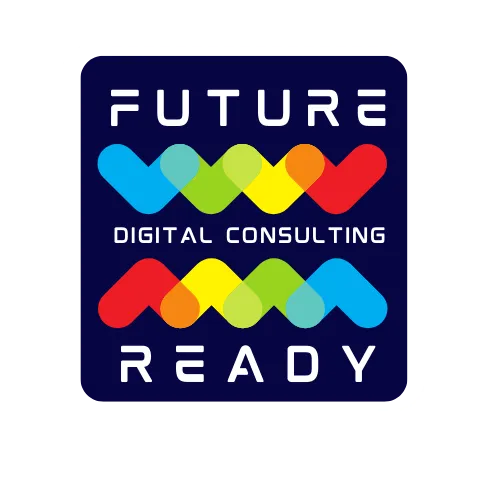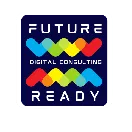Join the
Future Ready Community
At Future Ready Consulting, we believe that growth and innovation thrive in the community. Whether you're an entrepreneur just starting out, a business leader looking to scale, or simply someone passionate about learning and adapting to the future, our community is the place for you.
Start your journey with us by following our blog for the latest insights, subscribing to our YouTube channel for expert tips and tutorials, and connecting with us on social media for real-time updates and conversations. Join a network of like-minded individuals and organizations who are committed to driving change, embracing new opportunities, and preparing for the future. Engage with us, share your journey, and let’s grow together. Your future-ready path starts here.

Collaborate with AI Using ChatGPT's Canvas Feature
“Our systems will only work for everyone if they are designed with multiple voices in the room, every step of the way. Humans have a propensity for designing for the familiar. To change this default, we have to challenge our own assumptions & continue to learn from a diversity of perspectives.”
Tulsee Doshi, Product Lead — ML Fairness and Responsible AI, Google
Tutorial: Collaborate with AI Using ChatGPT's Canvas Feature
Introduction
Have you ever wanted to work with AI as easily as you chat with a friend? Imagine if collaborating with AI felt less like a process and more like a natural conversation. With Canvas, ChatGPT adds features like real-time editing, comment integration, and directly editing content, setting it apart from traditional AI tools that mainly offer text generation without interactive refinement. These features make working with AI feel smoother and more like having a teammate you can rely on for suggestions and adjustments. With ChatGPT's new Canvas feature, we're getting closer to that vision. Imagine an AI you could work alongside seamlessly, pointing things out and having a natural, interactive conversation—without all the tedious scrolling and copying-and-pasting. That's where Canvas comes in.
In this tutorial, we'll explore how to use Canvas effectively in a five-step process developed from years of content creation experience and tips from others. This process is perfect for generating ideas, organizing projects, and creating content. Let's dive into the features of Canvas, apply the five-step method, and learn how to streamline and systematize your workflows.
Overview of the Canvas Feature
To start, it's helpful to understand what the Canvas feature is. ChatGPT 4 with Canvas takes the typical AI chat and adds new capabilities for better collaboration, such as real-time editing, comment integration, and directly editing content—similar to collaborative tools like Google Docs. Instead of rewriting entire sections, you can focus on small edits, rearrange content, and get detailed feedback in an easy, conversational way. For example, if you're working on a blog post, you can quickly adjust the tone of a paragraph, reorganize the flow of ideas, or add specific examples—all while seeing the changes applied in real time, making the editing process much smoother and more interactive.
Potential Challenges of Using Canvas
While Canvas offers many powerful features, there are some potential challenges users might encounter. For example, relying solely on AI feedback could lead to a lack of diverse perspectives, as AI might not catch all nuances or unique content aspects. Additionally, the AI might sometimes offer overly generic suggestions that need further human refinement to meet specific project needs. Automation tools might not always fit every scenario, especially for projects that require a personal or creative touch. To address these issues, it's important to combine AI tools with other forms of feedback, such as peer reviews or expert consultations, for a balanced approach.
Access to ChatGPT Canvas
If you're using any paid or team account, you already have access to Canvas, and it's set to roll out for free accounts soon. Canvas is great for content creation, coding projects, or any work that benefits from dynamic editing and feedback.
Let's get to a framework to best utilize Canvas as suggested by Casey Meehan from Blazing Zebra and added to by myself of Future Ready Consulting.
Review Process
This process can be used to create or refine any type of content or coding project.

Step 1: Developmental Review
The first step is a Developmental Review, where you evaluate the big picture and focus on strengthening the core idea. For example, in a content creation project, the core idea might be the key message or central theme you want to convey—such as educating readers on a new technology or inspiring them to take action. The goal here is to make sure that the main message stays clear and compelling from start to finish, and that it’s something your audience can easily connect with. Here’s how you can use Canvas to do it:
Start by analyzing the core theme. Paste your content into Canvas and ask ChatGPT: “How strong is the overarching theme of this content? What can be improved from a big picture perspective?” ChatGPT will provide suggestions, which you can either apply or discuss further.
Consider critical perspectives. To refine the piece, ask, “What might a harsh critic say about this behind closed doors?” This will help you anticipate weaknesses and address them proactively.
Step 2: Structural Review
Once the main theme is clear, move into a Structural Review. This step might take about 15 to 30 minutes, depending on how much content you have and how complex it is. It's worth spending time here to make sure everything is organized logically. To make the most of your time, consider prioritizing sections that are more complex or most important to the main point before reviewing simpler ones. This stage focuses on the organization of the content:
Evaluate the order of sections. Use Canvas to ask, “Should the order of these sections be rearranged to maximize clarity or impact?” ChatGPT will suggest changes that can make your work more cohesive and engaging.
Check for coherence. Ask, “Do these sections work well together? Could any be combined for better engagement?” This will help ensure each part contributes effectively to the whole.
Step 3: Detailed Section Review
Next, review each section individually. The goal here is to improve or adjust the language and make the writing more engaging:
Look for opportunities to add flair. For instance, you could highlight a section and ask, “Can we add some cool slang that appeals to a younger audience?” ChatGPT will provide suggestions to make the language more dynamic.
Simplify complex terms. Identify any jargon or overly complex phrases and ask ChatGPT to suggest simpler alternatives, ensuring the message is accessible to a broader audience.
Step 4: Proofreading and Final Touches
The final stage is proofreading. I like to use both AI tools like Canvas and Gemini but you can also use more traditional ones like Grammarly to catch anything that might have slipped through. Together, they help make sure the content is polished and ready to go.
Step 5: Evaluating for Bias and Equity
In this step, it's important to ensure that the content created with AI is fair, unbiased, and accessible to all. AI tools can sometimes reflect inherent biases based on the data they were trained on, which can inadvertently affect the content produced.
Identify Potential Bias: Ask Canvas, "Does this content contain any language that might reflect bias, whether cultural, gender, or otherwise?" This helps you identify phrases or concepts that may unintentionally exclude or stereotype.
Ensure Equity in Representation: Ask, "Does the content represent diverse perspectives fairly?" This is especially important when writing for audiences that may have a wide variety of backgrounds and experiences.
Refine for Inclusivity: Work through each section and ensure that the language used is inclusive and considerate of different experiences. For example, replace gendered terms with neutral ones where possible, and avoid cultural stereotypes.
Additional Applications
Canvas isn't just for content creation. You can use this five-step process for:
Project Planning: Paste a call transcript into Canvas and ask it to create a project plan. For example, imagine you're planning a grant writing project with a partner or a project proposal for a new client. After pasting the meeting transcript into Canvas, you can use the developmental review to clarify the project goals, address potential obstacles, and create a detailed roadmap. You can then refine specific sections, like timelines or team responsibilities, using structural and detailed reviews.
Software Development: Use Canvas for reviewing code structure, simplifying explanations, and improving documentation.
Personal Development and Strategy: Apply the same steps to set personal goals or refine business strategies.
Conclusion
Systematizing and Automating Your Workflow
Once you’ve perfected a series of prompts that work well, consider using automation tools like Make.com or Zapier to streamline your process. If you're new to automation, you can start by visiting Make.com's Getting Started Guide for a step-by-step walkthrough. This will help you understand how to set up automated workflows, connect your apps, and create processes that save you time. You can set up automated sequences for frequently used tasks, saving you time by automating repetitive tasks.
Summary and Next Steps
By following these five steps—Developmental Review, Structural Review, Detailed Section Review, and Proofreading and Evaluating for Bias and Equity—you can use Canvas to turn your ideas into polished content or well-organized projects. It’s like having a collaborative partner who’s always ready to help improve your work.
If you’re interested in going further, check out tools like Make.com for automating some of these steps, or join communities like our Future Ready Consulting Small Business Growth community to connect with others and share tips. Start applying this process to your content, project planning, and even personal growth. With Canvas, AI is no longer just a tool—it’s a real collaborator.
Future Ready Podcast
Check out our new podcast, Journey to Impact! Find it on YouTube and other popular podcasting services such as Audible.com!
Future Ready YouTube Channel
Want to learn more about business, tech, WorkStyle Patterns®️ Process, HighLevel? Then check out our YouTube Channel!
Online Communities
Become a member of one of our growing communities.
Learn from our experts and peers.
Get exclusive resources just for community members.
Get first access to any new courses.
In this community we explore all things Google. From Google Business Profile to Gemina to Docs and Sheets and more.
Learn about the lates updates to GoHighLevel and how to set up your business on the best software available.

Cincinnati, OH, 45215
Phone: (513) 995-2330
Copyright 2025. Future Ready Consulting. All Rights Reserved. Privacy Policy

